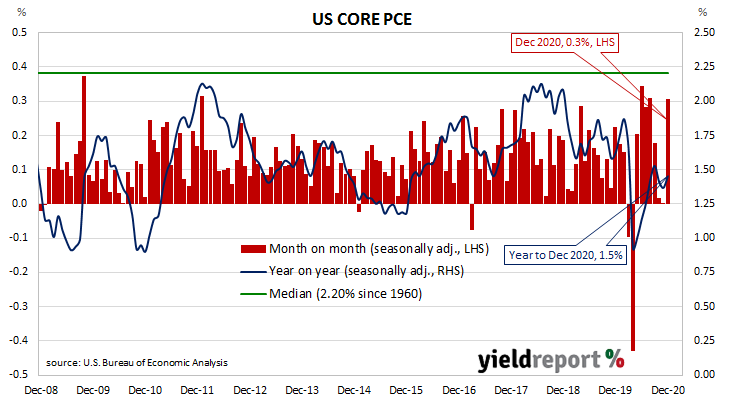Summary: US Fed’s favoured inflation measure up by 0.3% in December; above market expectations; annual rate back to 1.5%; little movement from Treasury bond yields.
One of the US Fed’s favoured measures of inflation is the change in the core personal consumption expenditures (PCE) price index. After hitting the Fed’s target at the time of 2.0% in mid-2018, the annual rate then hovered in a range between 1.8% and 2.0% before it eased back to a range between 1.5% and 1.8% through 2019. It then plummeted below 1.0% in April 2020 before rising in the June and September quarters.
The latest figures have now been published by the Bureau of Economic Analysis as part of the December personal income and expenditures report. Core PCE prices rose by 0.3% over the month, more than the 0.1% which had been generally expected and above the flat results in November and October. On a 12-month basis, the core PCE inflation rate ticked up from November’s revised rate of 1.4% to 1.5%.

Short-term US Treasury bond yields slipped a touch while longer-term yields moved modestly higher. By the close of business, the 2-year Treasury bond yield had lost 1bp to 0.11%, the 10-year yield had crept up 1bp to 1.06% while the 30-year yield finished 2bps higher at 1.83%.
The core version of PCE strips out energy and food components, which are volatile from month to month, in an attempt to identify the prevailing trend. It’s not the only measure of inflation used by the Fed; it also tracks the Consumer Price Index (CPI) and the Producer Price Index (PPI) from the Department of Labor. However, it is the one measure which is most often referred to in FOMC minutes.

